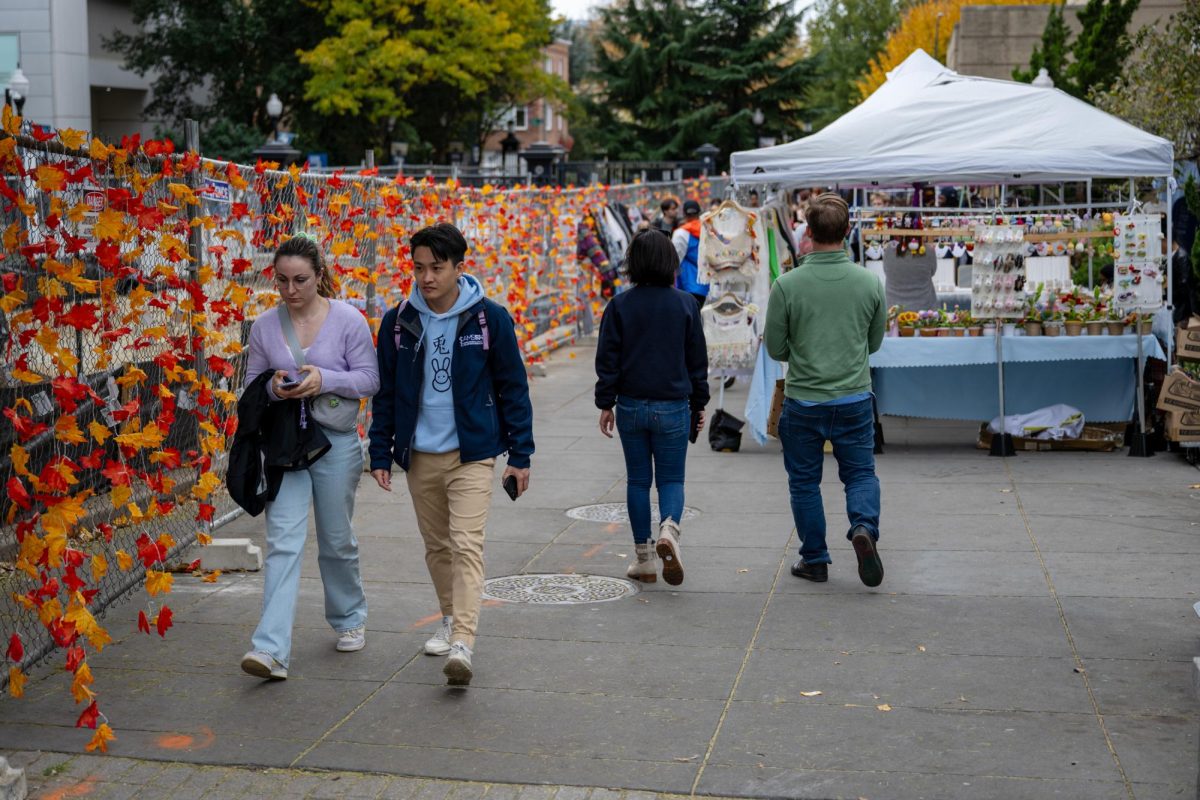A month into GW’s two-monthlong I Street Mall construction project, vendors and customers who frequent a weekly farmers market in the space said operations are temporarily cramped, but the project’s eventual upgrades will improve the area’s look and function.
Officials in September said during I Street Mall construction — which is set to wrap in November and will include additional lighting, anti-rodent infrastructure installations and the removal of planters — the farmers market will continue operating in the same space between the GW Hospital and Ross Hall. Farmers market vendors and customers said the construction has reduced space for market booths and customers, but they are looking forward to increased lighting and the beautification of seating and planters in a currently underutilized space.
Officials said they will renovate the I Street Mall to install anti-rodent Big Belly trash cans, Xcluder anti-rodent mesh in the planters, remove planters to create more open space and add string lighting. This construction closed the middle section of the mall — which previously held benches for seating that were razed — and left narrow walkways on either side of the already heavily trafficked walkways on the I Street Mall.
Adam Aaronson, the assistant vice president of Construction Management and Campus Planning, said in September that the construction crews will move the northern section of the fencing for the farmers market, located near the GW Hospital entrance, closer to the planter beds to give market vendors more space to set up their booths. FRESHFARM, a District-wide nonprofit that runs farmers markets and promotes sustainable food through food education and farmers markets, hosts vendors on I Street Mall on Wednesdays from 3 to 7 p.m. during the on season.
Evan Paramore, FRESHFARM’s market operations manager, said the company is working closely with the GW Facilities team to “minimize disruption” to the farmers market. Paramore said the construction has made space feel a bit “snugger,” but the market is able to run as usual.
“We are very excited that this construction will be bringing additional permanent lighting and seating to the I Street walkway,” Paramore said in an email. “Especially in the winter months, we are hopeful this will encourage customers to spend more time in the market space connecting with each other and our wonderful farmers and producers.”
Kentha Stephens, the owner of the Blue Jamaican Coffee stand that has set up the market for the last six months, said the construction forces vendors to move their booths “a little further out,” congesting foot traffic at the market and the pathway people use to pass through.
“There’s been some impact in terms of sales and foot traffic due to the construction,” Stephens said.
Stephens said I Street Mall had a “rat infestation,” which officials said they hope to mitigate through the construction project. During construction, Stephens said he has noticed more rats scampering around the parkway. There’s also been an influx in mosquitoes, and many vendors bring bug spray and mosquito nets to repel them, he said.
“I guess the construction is kind of like breaking up where they nest or where they live,” Stephens said. “So, you know, we’ve seen more sightings of rats now that the construction is taking place.”
Stephens said he hopes the construction project will beautify the area because I Street Mall previously underutilized seating space. He said he hopes the area will be more like a parkway and less like a barrier between places.
“I felt like it was like wasted space,” Stephens said.
Senior Florish Momodu, a biology student and a shopper at the FRESHFARM market, said Wednesday that she noticed a narrower walking space for customers. She said the space could be difficult for people with mobility issues and disabilities to navigate.
“I feel bad because they should have their own space,” Momodu said.
Sophomore Ayla Abro, an international business student who said she has shopped at the FRESHFARM market every month for the past year, said the market offered around the same number of vendors, but she noticed more people hustling through the walkways instead of sitting down at the market or shopping.
“I feel like last semester, you could definitely see more people at each of the stalls,” she said. “But right now, it’s kind of just like a really narrow kind of passageway.”





